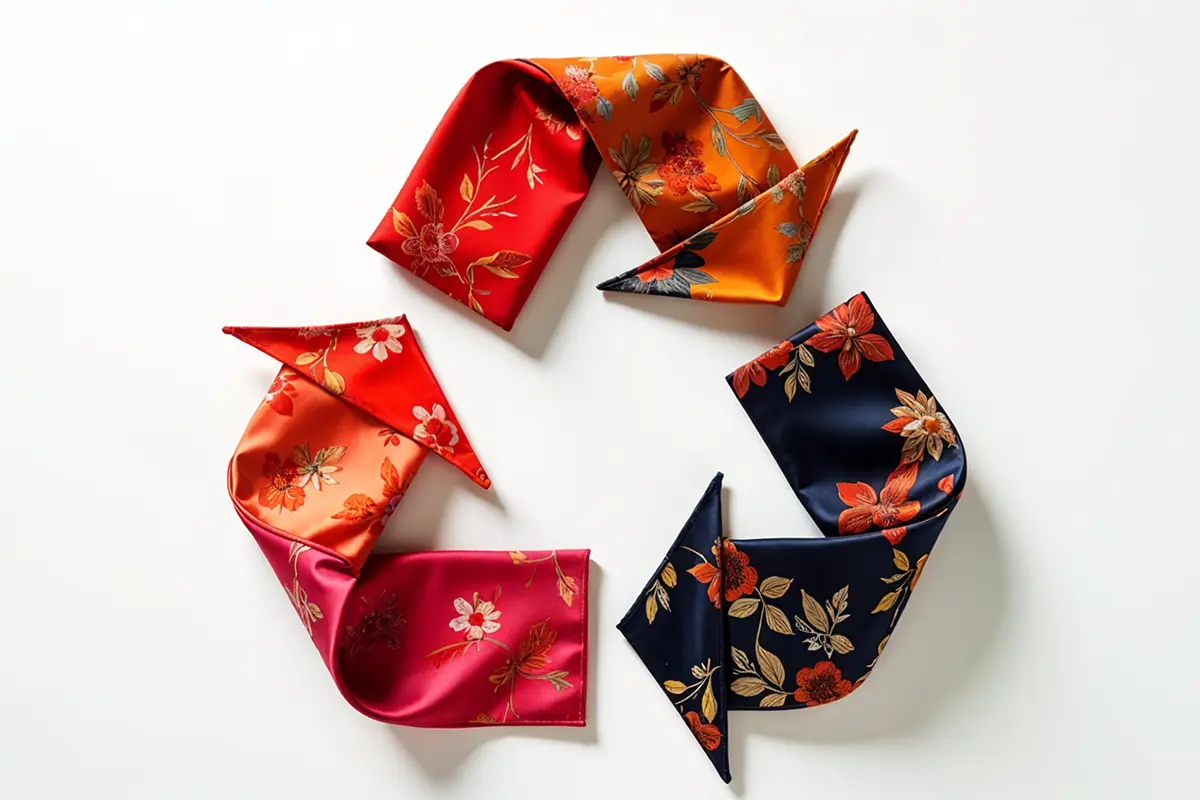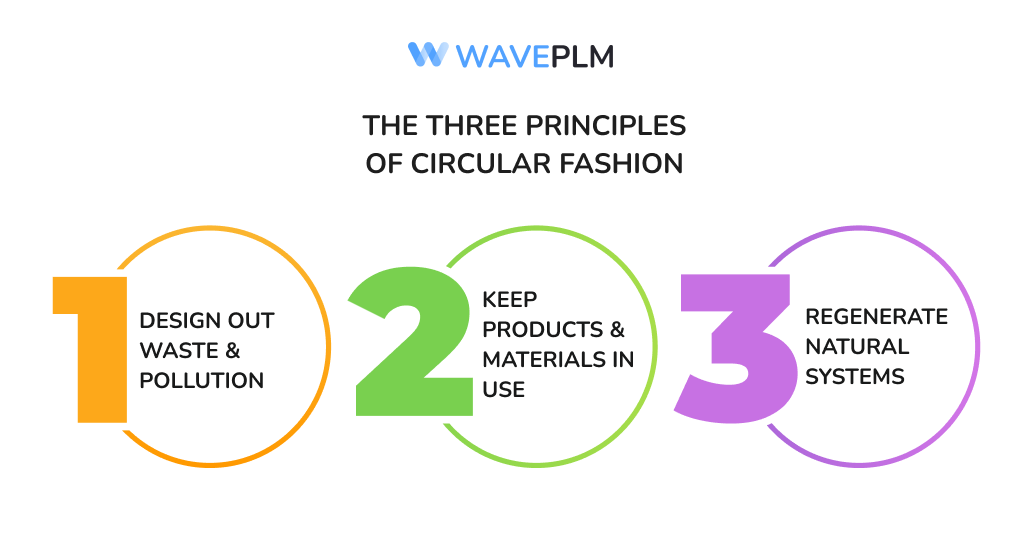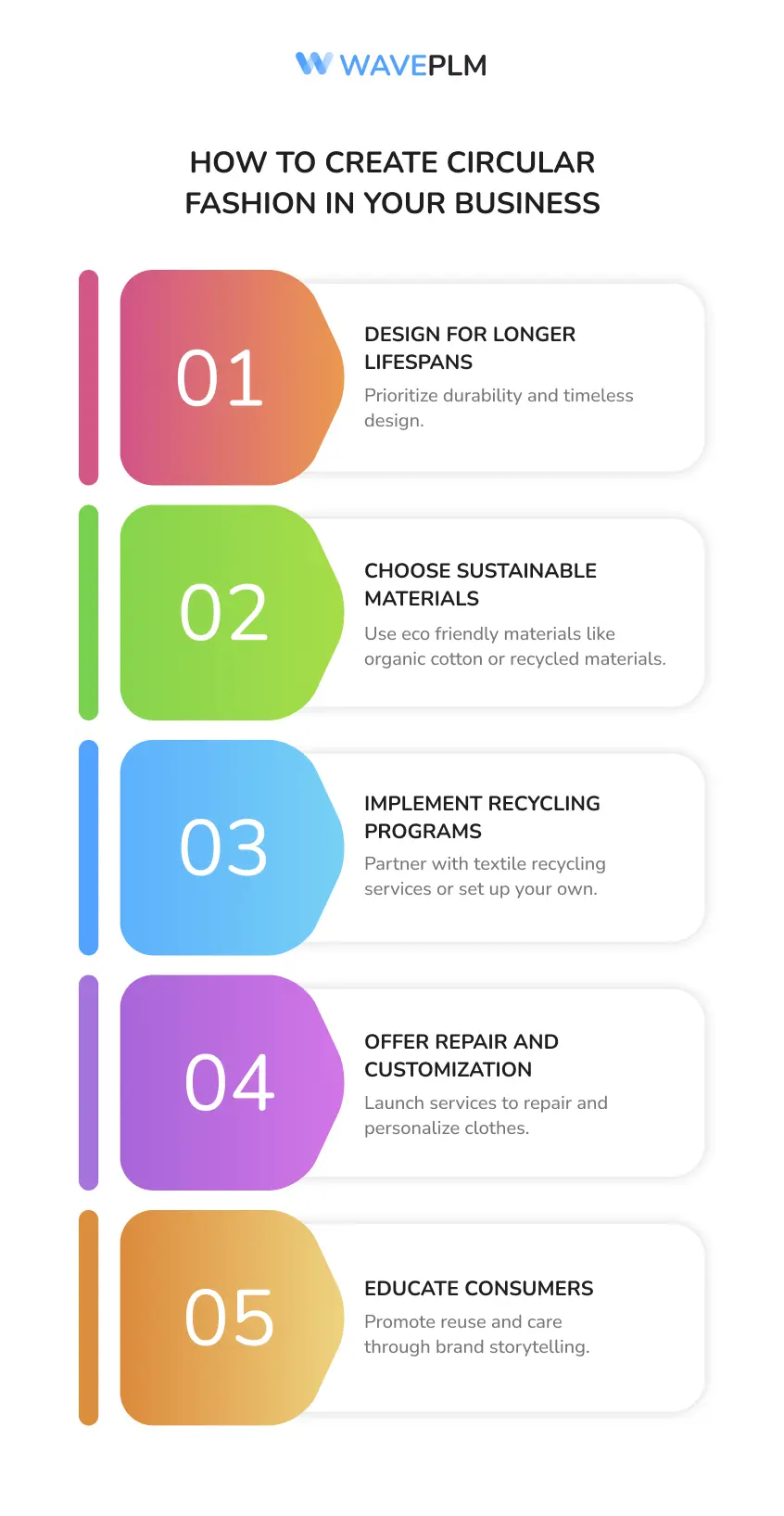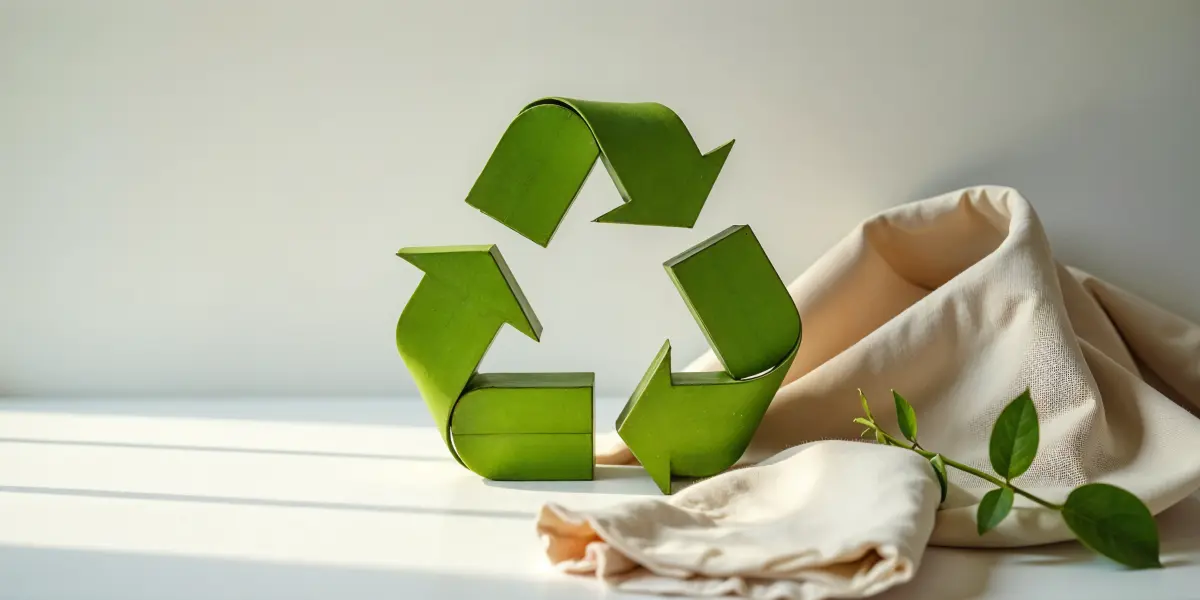
The fashion industry is at a turning point. Rising textile waste, overproduction, and growing demand for sustainable fashion are driving change. One solution leads the way: circular fashion.
The concept of circular fashion is a comprehensive system that emphasizes designing products for reuse, repair, and recycling. It presents a powerful alternative to the outdated linear model of make-use-dispose. This article explains how circular fashion transforms the fashion economy through innovative business models and sustainable practices.
Let’s explore key principles, trends, and examples of circular fashion shaping the future.
What Does Circular Fashion Mean?
Circular fashion refers to a closed loop system where fashion products are designed, produced, used, and recovered in a way that extends their life and minimizes waste.
Unlike the traditional linear model, it n keeps materials in circulation through repair, reuse, recycling, and circular design. Circular fashion aims to reduce environmental impact by minimizing waste, improving resource efficiency, and extending product lifespan, while also creating new value for fashion businesses.
The Three Principles of Circular Fashion
The Ellen MacArthur Foundation defines circular fashion using three key principles:
- Design out waste and pollution
- Keep products and materials in use
- Regenerate natural systems
These principles align the fashion industry with a circular economy, promoting resource efficiency and lower climate change impacts. In addition to reducing waste, they also help regenerate nature and protect natural ecosystems.

The Four R’s of Circular Fashion
To implement a circular fashion model, brands often follow the “Four R’s”:
- Reduce – design fewer, better items
- Reuse – encourage reusing garments through second-hand and resale to extend their lifecycle and minimize waste
- Repair – offer mending and maintenance services, with repairing garments as a key strategy for extending their life and promoting sustainability
- Recycle – use recycling programs for end-of-life garments
This approach helps brands minimize waste and support sustainability.
How Circular Fashion Is Transforming the Fashion Economy
The circular fashion economy is growing rapidly. Let’s explore how it benefits the fashion industry:
|
Benefit |
Impact |
|---|---|
|
Reduce environmental impact |
Lower carbon emissions, less water use, conservation of natural resources such as water, energy, and raw materials |
|
Minimize textile waste |
Less landfill waste, more recycled materials |
|
Extend clothing lifespans |
Support reuse and repair |
|
Drive innovative business models |
Resale, rental, take-back services |
|
Enhance customer loyalty |
Eco-conscious consumers prefer sustainable brands |
Business Models Supporting Circular Fashion
Circular fashion fuels exciting new business models that each embody a circular model within the fashion industry. These business models, such as resale, rental, and repair, support a shift from the traditional linear approach to a more sustainable, closed-loop system. Some circular business models even enable companies to generate revenue without producing new clothes, offering innovative alternatives to conventional fashion production.
1. Clothing Rental
Brands offer short-term rentals for special occasions, reducing demand for new clothing.
2. Resale and Second-Hand Platforms
Fashion businesses run branded resale programs or partner with marketplaces to extend clothes’ life.
3. Repair and Customization Services
In-house or third-party repair services keep clothing in circulation.
4. Take-Back and Recycling Programs
Brands collect worn clothes and use textile recycling to recover raw materials. These collected clothes can be reused or remade into new textiles as part of a closed-loop system.
5. Subscription Fashion
Subscription-based business models encourage reuse and sharing.

Global Brands Leading Circular Fashion
Several global brands already embrace circular fashion:
|
Brand |
Circular Practice |
|---|---|
|
Patagonia |
Repair and resale of outdoor gear |
|
Eileen Fisher |
Take-back and closed loop system for clothing |
|
Levi’s |
Recycling programs for denim |
|
Stella McCartney |
Uses eco friendly materials and circular design |
|
H&M |
In-store textile recycling bins |
These brands prove circular fashion is scalable and profitable.
How to Create Circular Fashion in Your Business
Want to start? Here’s how to create a strategy:
When developing a circular fashion strategy, it is essential to consider the entire process and supply chain, ensuring that every stage—from sourcing materials to production and recycling—is sustainable and transparent.
1. Design for Longer Lifespans
Prioritize durability and timeless design.
2. Choose Sustainable Materials
Use eco friendly materials like:
- Organic cotton
- Regenerated fibers (TENCEL™)
- Recycled materials
- New materials that are recyclable, durable, and environmentally friendly to support circular fashion
3. Implement Recycling Programs
Partner with textile recycling services or set up your own.
4. Offer Repair and Customization
Launch services to repair and personalize clothes.
5. Educate Consumers
Promote reuse and care through brand storytelling.

The Rise of Circular Fashion: A Global Trend
The rise of circular fashion marks a major shift in fashion industry trends. Fueled by:
- Consumers demanding transparency and sustainability
- Fashion businesses innovating with closed loop systems
- Regulatory pressure to cut waste and environmental impact
As circular practices scale, the fashion economy will shift from linear to circular models. This transition involves the industry actively transitioning and shifting towards it by adapting to changing consumer behavior, evolving regulations, and new business practices.
Key Benefits of a Circular Fashion Economy
|
Benefit |
Description |
|---|---|
|
Minimize waste |
Divert textile waste from landfills |
|
Reduce environmental impact |
Conserve water and energy |
|
Resource efficiency |
Lower demand for virgin raw materials |
|
Support innovation |
Drive innovative business models |
|
Future-proof |
Align with regulations and fashion industry trends |

Frequently Asked Questions (FAQ)
Q: What does circular fashion mean?
A: Circular fashion refers to designing, producing, and managing fashion products to extend life and minimize waste.
Q: What are the three principles of circular fashion?
A: Design out waste, keep materials in use, regenerate natural systems.
Q: What are the four R’s of circular fashion?
A: Reduce, reuse, repair, recycle.
Q: What is the rise of circular fashion?
A: The rise of circular fashion reflects growing adoption of circular models in the fashion industry to address environmental impact.
Conclusion: The Future of Circular Fashion
The term circular fashion is more than a buzzword—it represents the future of a sustainable and resilient fashion economy.
Circular fashion empowers fashion businesses to:
- Lower environmental impact
- Build lasting relationships with customers
- Unlock significant opportunities for growth
By embracing closed loop systems, sustainable materials, and innovative business models, fashion brands can lead this transformation.
The journey to a circular fashion economy starts with bold ideas and sustainability at scale. Now is the time to create a more sustainable industry.





Leave a Reply